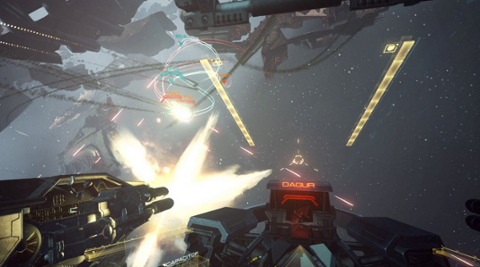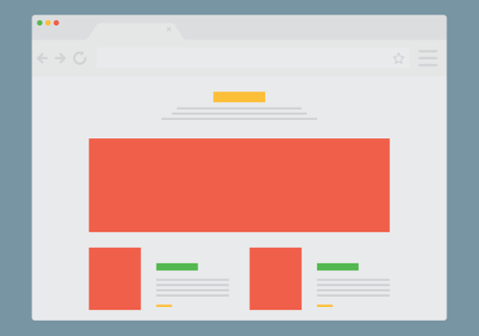[caption id="attachment_139378" align="aligncenter" width="1000"]

UX Designers[/caption] In the tech sector, design can sometimes feel like an afterthought. But as we concern ourselves so fervently with bits and bytes, designers help ensure that everything on the screen makes sense to end users.
Adobe’s latest survey shows that User Experience (UX) designers are not only important, but they’re in high demand. Conducted in August and September of 2016, Adobe’s sampling pool is admittedly small. Though only 501 individuals were polled, they constituted the decision makers: department heads, senior managers and HR leads, all of whom were asked what they look for in a UX designer. Those hiring UX designers report they’re “as much a priority to their organization as software engineers." Demand will only increase over the next five years. All major metro areas are seeing upticks in UX designer demand, with the greatest growth coming from (surprisingly) Detroit. New York still reigns supreme for UX designers. Some 84 percent of those hired as UX designers work full-time on-site, and hiring managers report the term ‘UX designer’ is the preferred title for the position (unlike developers, where job titles often arbitrarily vacillate between ‘developer’ and ‘engineer’). Though dominated by males, females comprise 39 percent of the UX designer field. Youth is also important. Of all UX designers hired, those polled reported 92 percent of their workforce were Millennials. As demand goes, UX designers were on par with software engineers (or developers – whatever). Around 87 percent of respondents said hiring UX designers was as important as hiring good engineering talent. Graphic designers are also in demand, with 76 percent of those polled saying it was a priority for their company. UX designers are not one-off entities inside those companies hiring, either. Some 63 percent of polled managers say their companies have hired five or more UX designers in the past 12 months, with 40 percent saying they’ll hire twice as many UX designers in the next 12 months. [caption id="attachment_139379" align="aligncenter" width="2804"]

UX Designer Breakdown[/caption]
How UX Designers Can Get a Job
But how do you get a job as a UX designer? As you might expect, your
portfolio and experience matter more than anything else. Three-fourths of those polled say experience and portfolio are paramount considerations for landing a UX job, with 70 percent saying previous coding experience is also important. Only two-thirds rely on references, while 63 percent say a
bootcamp certification is a big factor. (Oddly, only 57 percent say a visually appealing résumé makes a difference when hiring a UX designer.) Similarly, 27 percent of hiring managers say having no previous experience as a UX designer will disqualify you once you get an interview, with 20 percent pointing to a lack of coding experience as a reason you’d be disqualified. Another 16 percent will dismiss a candidate for having poor interpersonal skills. Like any job, the type of work you’ve done previously is important. While creating great end-user experiences is obviously paramount for a UX designer, potential bosses also want to see how a candidate plans to encourage growth via UX, and handle consistency across platforms. Lowest on their list of concerns? Bounce rates and sales closing as a result of UX. In addition to the
how of being a UX designer, the
what also matters. Most (65 percent) are being hired to develop great web experiences, while 61 percent are being tasked with creating stunning visual designs. Mobile is critical (remember, consistency across platforms!), as is desktop app design. Looking forward, virtual and augmented reality are important for the future of UX design. Artificial intelligence and wearable UX are also going to be the ‘next big things’ for UX designers to master, with increased hiring in years to come. All told, UX plays an important role in today’s world, and is poised to be more critical as we edge into different realms of interactivity with our gadgets. What is now pushing pixels around on a screen will soon become conversations with a bot or exploring a virtual environment.
 UX Designers[/caption] In the tech sector, design can sometimes feel like an afterthought. But as we concern ourselves so fervently with bits and bytes, designers help ensure that everything on the screen makes sense to end users. Adobe’s latest survey shows that User Experience (UX) designers are not only important, but they’re in high demand. Conducted in August and September of 2016, Adobe’s sampling pool is admittedly small. Though only 501 individuals were polled, they constituted the decision makers: department heads, senior managers and HR leads, all of whom were asked what they look for in a UX designer. Those hiring UX designers report they’re “as much a priority to their organization as software engineers." Demand will only increase over the next five years. All major metro areas are seeing upticks in UX designer demand, with the greatest growth coming from (surprisingly) Detroit. New York still reigns supreme for UX designers. Some 84 percent of those hired as UX designers work full-time on-site, and hiring managers report the term ‘UX designer’ is the preferred title for the position (unlike developers, where job titles often arbitrarily vacillate between ‘developer’ and ‘engineer’). Though dominated by males, females comprise 39 percent of the UX designer field. Youth is also important. Of all UX designers hired, those polled reported 92 percent of their workforce were Millennials. As demand goes, UX designers were on par with software engineers (or developers – whatever). Around 87 percent of respondents said hiring UX designers was as important as hiring good engineering talent. Graphic designers are also in demand, with 76 percent of those polled saying it was a priority for their company. UX designers are not one-off entities inside those companies hiring, either. Some 63 percent of polled managers say their companies have hired five or more UX designers in the past 12 months, with 40 percent saying they’ll hire twice as many UX designers in the next 12 months. [caption id="attachment_139379" align="aligncenter" width="2804"]
UX Designers[/caption] In the tech sector, design can sometimes feel like an afterthought. But as we concern ourselves so fervently with bits and bytes, designers help ensure that everything on the screen makes sense to end users. Adobe’s latest survey shows that User Experience (UX) designers are not only important, but they’re in high demand. Conducted in August and September of 2016, Adobe’s sampling pool is admittedly small. Though only 501 individuals were polled, they constituted the decision makers: department heads, senior managers and HR leads, all of whom were asked what they look for in a UX designer. Those hiring UX designers report they’re “as much a priority to their organization as software engineers." Demand will only increase over the next five years. All major metro areas are seeing upticks in UX designer demand, with the greatest growth coming from (surprisingly) Detroit. New York still reigns supreme for UX designers. Some 84 percent of those hired as UX designers work full-time on-site, and hiring managers report the term ‘UX designer’ is the preferred title for the position (unlike developers, where job titles often arbitrarily vacillate between ‘developer’ and ‘engineer’). Though dominated by males, females comprise 39 percent of the UX designer field. Youth is also important. Of all UX designers hired, those polled reported 92 percent of their workforce were Millennials. As demand goes, UX designers were on par with software engineers (or developers – whatever). Around 87 percent of respondents said hiring UX designers was as important as hiring good engineering talent. Graphic designers are also in demand, with 76 percent of those polled saying it was a priority for their company. UX designers are not one-off entities inside those companies hiring, either. Some 63 percent of polled managers say their companies have hired five or more UX designers in the past 12 months, with 40 percent saying they’ll hire twice as many UX designers in the next 12 months. [caption id="attachment_139379" align="aligncenter" width="2804"]  UX Designer Breakdown[/caption]
UX Designer Breakdown[/caption]



